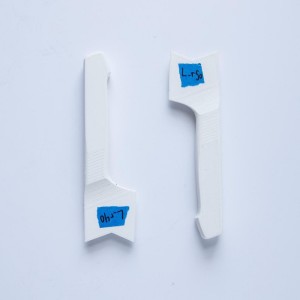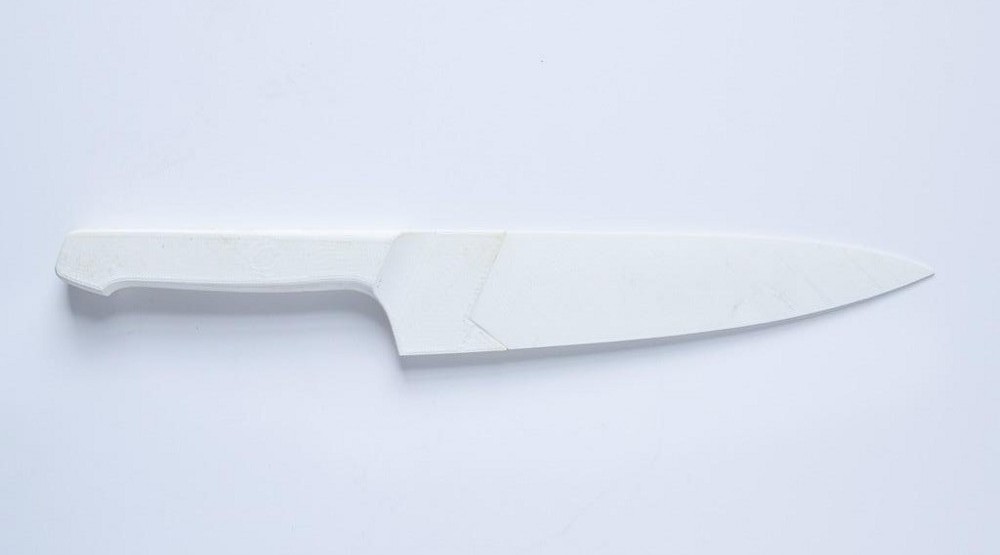 A growing number of products are being developed thanks to rapid prototyping with 3D printers, producing better designed, more successful and higher quality products than ever before. While recently there has been a lot of focus on the growing number of small businesses and startups that are outfitting their offices with 3D printers, I feel like that is only telling part of the story. It isn’t just that the companies that buy 3D printers are creating better products with 3D printed prototypes; the companies with more access to 3D printing services are profiting.
A growing number of products are being developed thanks to rapid prototyping with 3D printers, producing better designed, more successful and higher quality products than ever before. While recently there has been a lot of focus on the growing number of small businesses and startups that are outfitting their offices with 3D printers, I feel like that is only telling part of the story. It isn’t just that the companies that buy 3D printers are creating better products with 3D printed prototypes; the companies with more access to 3D printing services are profiting.
Not only are local 3D printing service bureaus becoming more common and reliable these days, but as is starting to become commonplace, the internet provides multiple options for companies in need of 3D printing services. 3D Hubs is a service that connects local 3D printing services bureaus, 3D printer owners and makers with local customers who need one-off 3D printing services. But this isn’t just a 3D printing directory, 3D Hubs handles the entire transaction, from making sure that the model is watertight and 3D printable, to charging the customer the appropriate amount of money for the job.
The result is a massive network of almost 24,000 3D printers available in more than 150 different countries that puts a 3D printer into the hands of virtually anyone. The service is an ideal way to offer people the ability to 3D print models that they downloaded from the internet or models that they designed themselves. And for small startups and young businesses, the ability to conveniently rapid prototype their designs is leading them to remarkable success.
When a pair of Brooklyn chefs and an industrial designer decided to try their hands at designing what they hoped would be the perfect kitchen knife they knew that it would involve a lot of experimentation. By the time they were an official startup and calling themselves Misen, they had already produced dozens of sketches and CAD designs before deciding to go to the next step and produce prototypes. As a new startup, naturally money was tight and producing prototypes using traditional methods would have been costly, especially since at that point they only wanted to test the shape and see how it would fit in users’ hands. So the Misen team decided to have some 3D printed prototypes made and they turned to their local NYC-based 3D Hub for help.
“Peter [Muller, Misen co-founder and industrial designer] used Solidworks 2014 to further develop our design and create 3D printable models. We had a pretty good sense of the necessary dimensions, so once we had the initial CAD in good shape, we started printing with just the knife handle as a ‘toe in water’ approach. Well, we soon dove in after that, and many, many 3D Prints later, we had a final Knife design for our final material prototypes,” explained Misen co-founder Omar Rada.
Rada contacted a local service provider named Dano Wall and his top-rated 3D Hub, who helped him create multiple 3D printed iterations of the Misen knife. And Wall doesn’t run a fancy 3D printing services company either, he is simply a Brooklyn-based maker who uses his MakerBot Replicator 1 and Replicator 2 to offer other Brooklyn residents his services. To offer insight into the working relationship between 3D Hubs service providers and local customers, 3D Hubs interviewed Rada and Wall about their experiences working together, designing the knife prototypes and what they had to say about the final quality of the 3D printing process.
- The final prototype.
- The manufactured Misen knife.
“I do a lot of trial-and-error type experiments to figure out what works best for any particular printing project; I always try to build in time for some playful experimentation. With these knives, which have very thin blades, I had to find something that would print perfectly flat and smooth in a single layer, retain its flatness after coming off the print bed, and have enough flexibility that the blade would stand up to rough handling. I eventually settled on a PET and polyester mix, printed on a slightly warm bed at very slow speed. This yielded high definition and extremely durable results that I was happy to pass on to Omar for testing,” Wall told 3D Hubs when asked how he printed the high-quality Misen prototypes.
After multiple Misen knife prototypes, Rada and his business co-founders settled on their final design and launched a crowdfunding campaign on Kickstarter on September 22nd. The trio were asking for only $25,000, which they raised in a little over an hour. Their $65 professional quality chef’s knife Kickstarter would go on to raise a remarkable $1,083,344 from 13,116 individual backers, and the first knives are due to be delivered in April of 2016. You can read the entire interview with Omar Rada and Dano Wall over on Medium.
Take a look at the Misen Kickstarter video:
Subscribe to Our Email Newsletter
Stay up-to-date on all the latest news from the 3D printing industry and receive information and offers from third party vendors.
Print Services
Upload your 3D Models and get them printed quickly and efficiently.
You May Also Like
The Market and Industry Potential of Multi-Material 3D and 4D Printing in Additive Electronics
Additive manufacturing leverages computer-based software to create components for products by depositing either dielectric or conductive materials, layer by layer, into different geometric shapes. Since its birth in the 1980s,...
3DPOD 262: Bio-inspired Design for AM with Dhruv Bhate, Arizona State University
Dhruv Bhate is an associate professor at Arizona State University. There, he looks at structures, materials, and design. Previously, he worked at PADT as well as in the semiconductor and...
3DPOD 261: Tooling and Cooling for AM with Jason Murphy, NXC MFG
Jason Murphy´s NXC MFG (Next Chapter Manufacturing) is not a generalist service; instead, the company specializes in making tooling. Using LPBF and binder jet, the company produces some of the...
3DPOD 260: John Hart on VulcanForms, MIT, Desktop Metal and More
John Hart is a Professor at MIT; he´s also the director of the Laboratory for Manufacturing and Productivity as well as the director of the Center for Advanced Production Technologies....




































